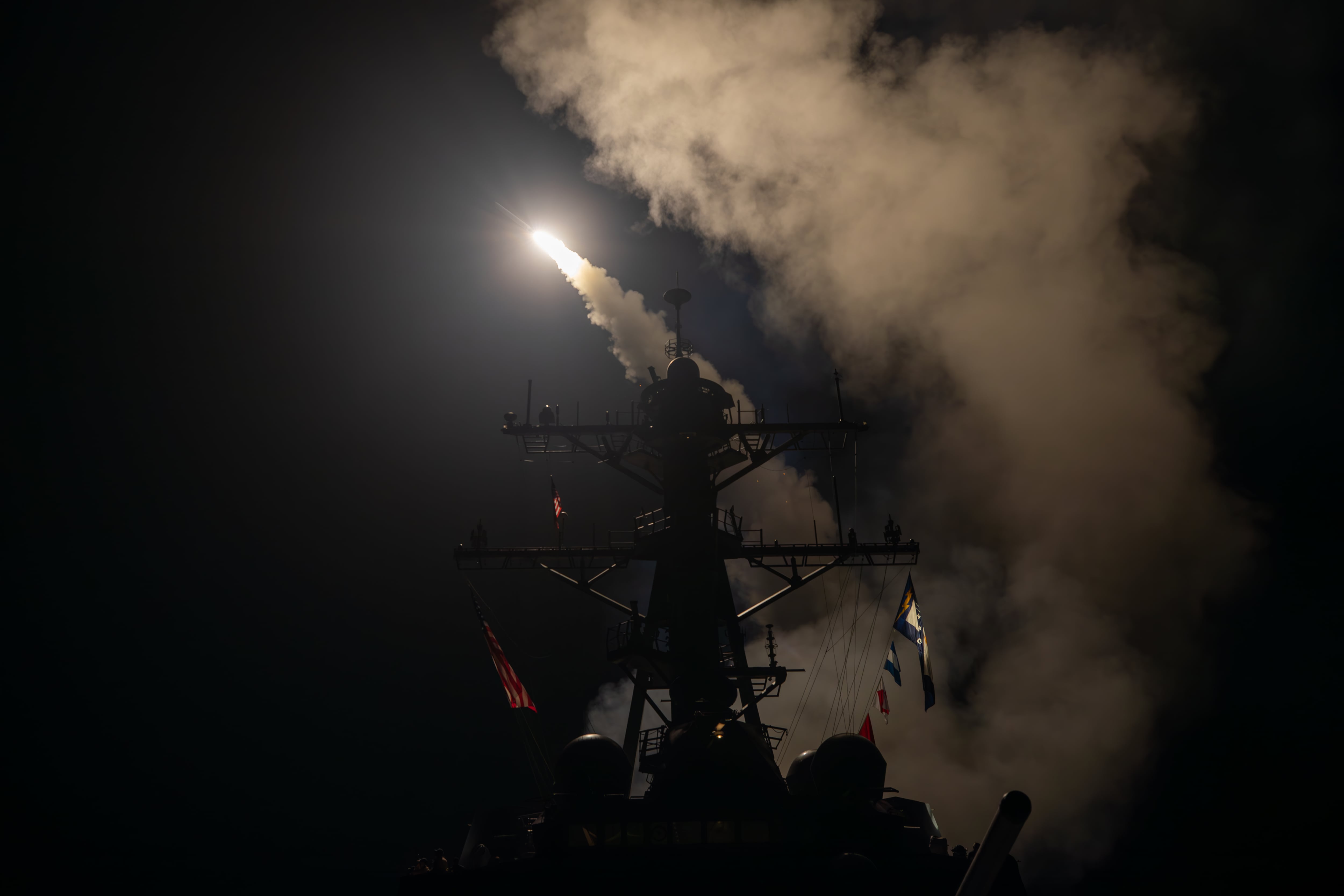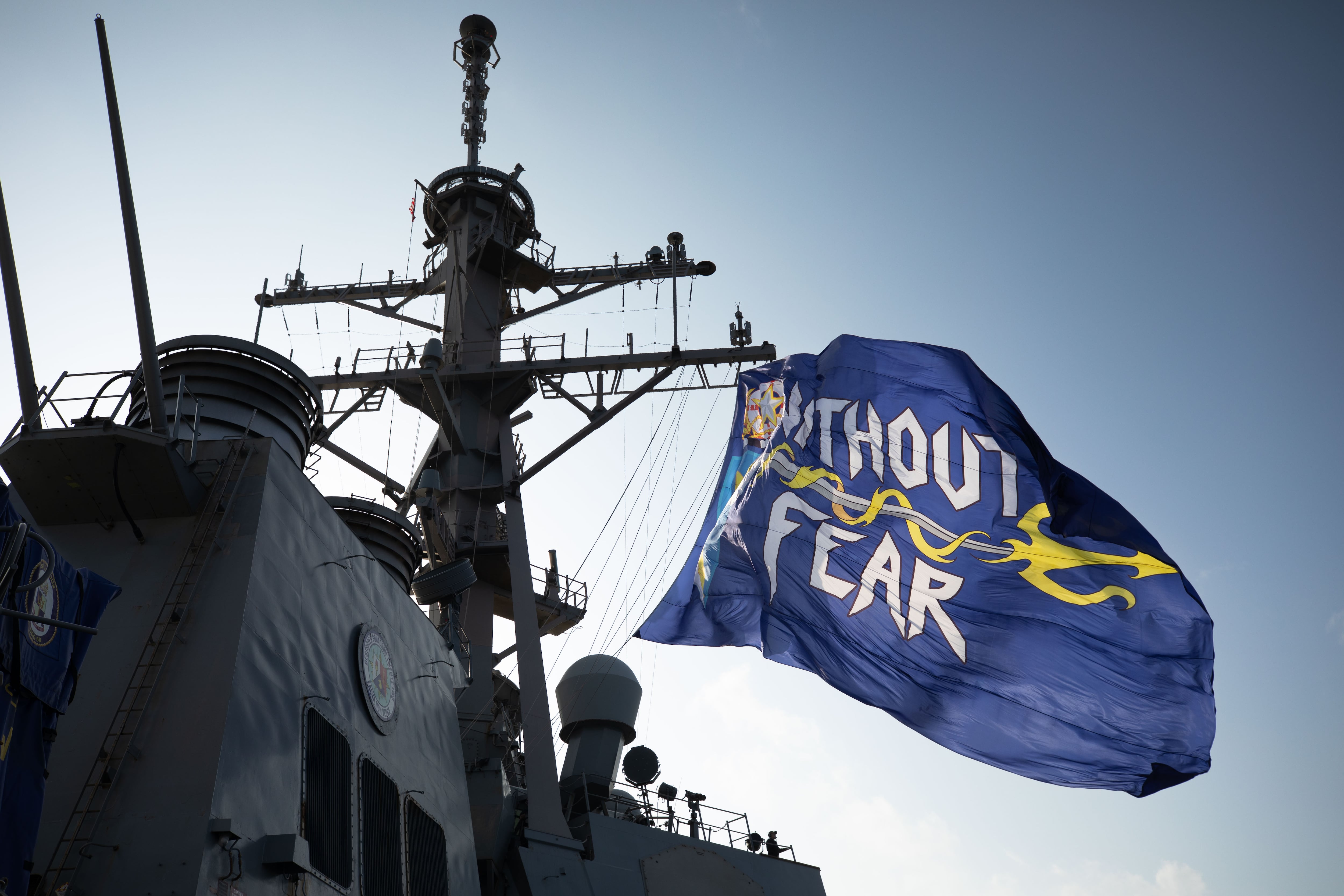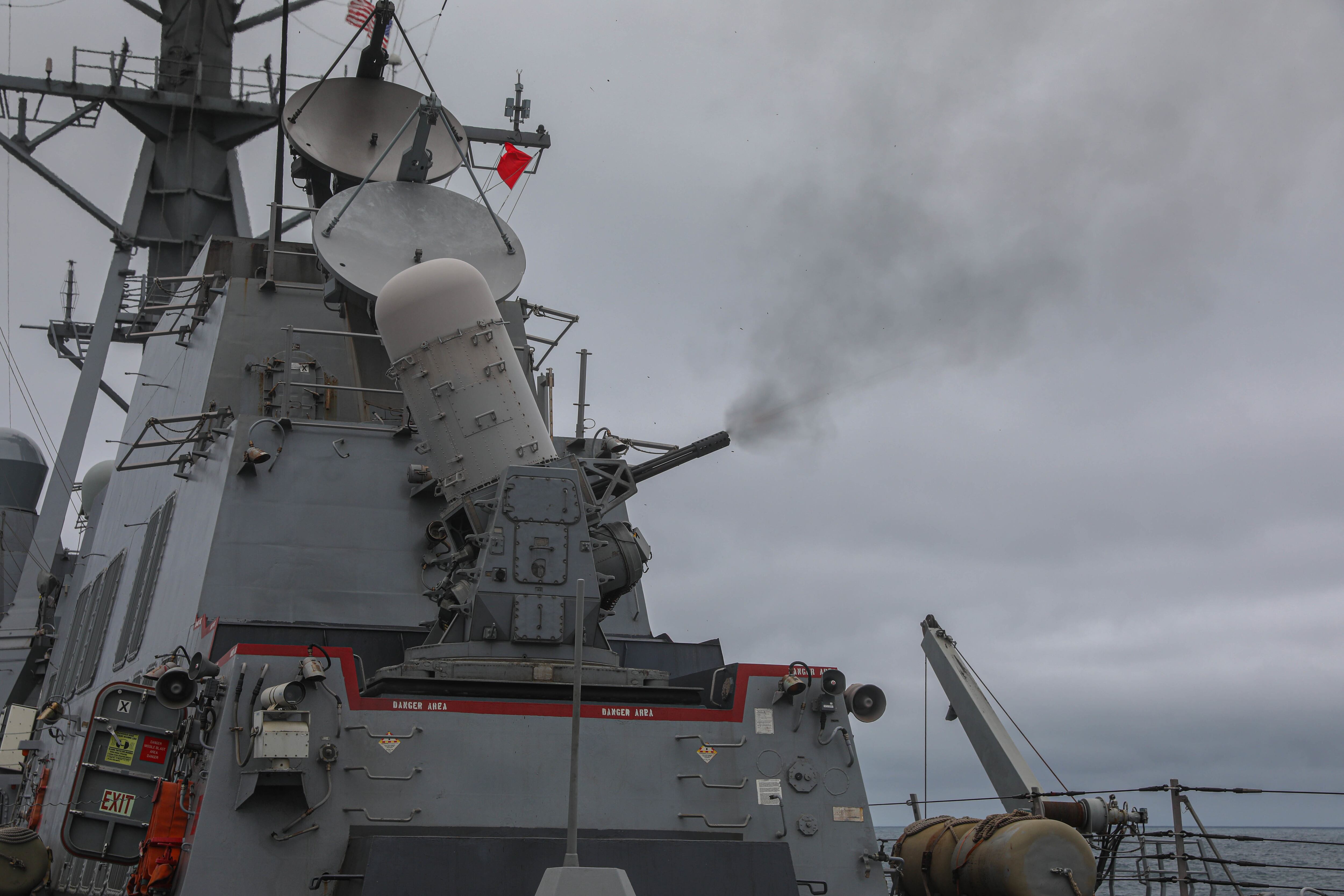Since the Israel-Hamas war began on Oct. 7, Iran-backed Houthi rebels in Yemen have launched dozens of missiles at cargo and military vessels in the Red Sea and Gulf of Aden. The Houthi rebels claim it’s in support of the humanitarian crisis in the Gaza Strip, but their targets have targeted vessels flagged from a variety of nations.
The Navy’s humble fleet of destroyers stands at the maritime spear tip of the effort to stop the Iran-backed militia and its attacks on the economically vital sea lanes.
These workhorses of the American sea service, and the men and women that crew them, are now getting a surplus of real-world experience in how to use their expansive array of war systems to track and take out missiles and attack drones.
RELATED

Meet the DDG
Arleigh Burke-class guided-missile destroyers are the service’s longest-running ship program, first conceptualized to replace aging Charles F. Adams class destroyers that retired in the coming decades, according to the Congressional Research Service.
Since Houthis began launching attacks in October, U.S. Central Command has confirmed that the destroyers Thomas Hudner, Gravely, Mason, Laboon and Carney have all defeated at least one Houthi attack, according to Military Time’s Red Sea attack tracker.
Although 92 destroyers have been ordered from industry to date, only 72 have been delivered to the service as of March 2023.
In service since 1991, each destroyer costs about $2.2 billion, according to the Congressional Research Service.
Capabilities and systems
An American destroyer makes for a fearsome foe on the high seas largely due to its AEGIS Weapons System.
Named after the shield used by the Greek god Zeus, AEGIS allows destroyers to find and target enemies to an unparalleled level.
In laymen’s terms, AEGIS coordinates radar tracking with onboard ordnance, ensuring that everything works together fluidly.
“[AEGIS] takes sensor inputs and allows efficient assignment of weapons to target,” said Bradley Martin, a senior researcher at RAND Corporation and retired surface warfare officer. “It says something like, ‘this thing over here is a problem, you need to shoot it.’”
AEGIS can track more than 100 targets at a time, according to the Navy.
Once a ship’s crew has found an enemy that needs shooting, a Navy destroyer has a bevy of options with which to fire.

The Mark-41 Vertical Launch System uses one of the 96 cells to launch a variety of missile options. The vertical launch system, or VLS, has launched more than 4,200 missiles with a roughly 99 percent launch success rate since program inception, according to the service.
In general, destroyers carry an array of missiles, such as tomahawks, SM-6, SM-3, and SM-2 missiles, MK-46 torpedoes, Enhanced Sea Sparrow Missiles and anti-submarine missiles, according to officials.
While vertical launch systems and AEGIS provide a layered defense, letting destroyers take out Houthi missiles and drones well before nearing the ship, destroyers also sport weapons of last resort, such as the so-called “Close-In Weapons System,” or CIWS.
“Certainly they don’t want to rely on it because the response time is minimal, but when it has needed to be used, it’s very effective,” Martin said.
In at least one Red Sea incident, the destroyer Gravely shot down an anti-ship cruise missile that got within one nautical mile of the destroyer on Jan. 30. During that attack, the Gravely used its Phalanx Close-In Weapons System to take the missile out, a defense official later confirmed.
RELATED

Citing operations security, Navy officials have declined to describe the precise load-out of destroyers heading into the Red Sea region to take on the Houthis.
While the ship is equipped to take on multiple types of threats on any deployment, load-outs can be modified depending on the theater, Martin said.
“Fundamentally, when a ship deploys, it’s ready to go pretty much anywhere and defend against pretty much any type of threat,” Martin said. “If the Navy knows that it’s very likely to be going to a particular location, they might vary the weapons loadout a little bit.”
Despite the number of advanced systems on the destroyers, Martin emphasized that one of the major questions about Red Sea operations remains “wear and tear” — on both the systems and people running them.
“The challenge is that there are only a few ships, and these are real human beings out there doing real stuff,” Martin said. “The wear and tear on people, and the wear and tear on equipment, is something that has to be recognized.”
Zamone “Z” Perez is a reporter at Military Times. He previously worked at Foreign Policy and Ufahamu Africa. He is a graduate of Northwestern University, where he researched international ethics and atrocity prevention in his thesis. He can be found on Twitter @zamoneperez.





